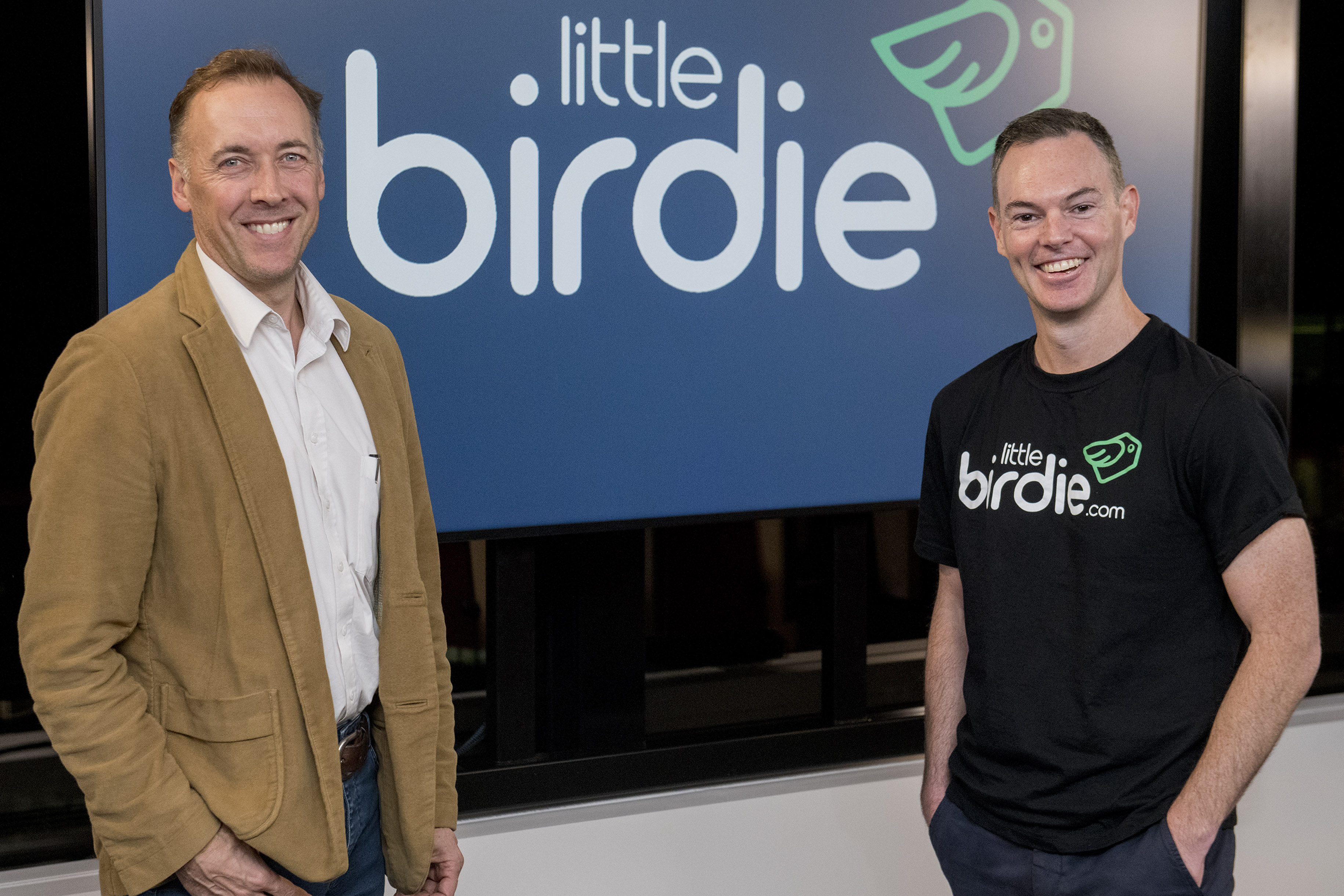TC
Auto Added by WPeMatico
Auto Added by WPeMatico
Solidus Labs, a company that says its surveillance and risk-monitoring software can detect manipulation across cryptocurrency trading platforms, is today announcing $20 million in Series A funding. It’s pretty great timing, given the various signals coming from the U.S. government just last week that it’s intent on improving its crypto monitoring efforts — such as the U.S. Treasury’s call for stricter cryptocurrency compliance with the IRS.
Of course, Solidus didn’t spring into existence last week. Rather, Solidus was founded in 2017 by several former Goldman Sachs employees who worked on the firm’s electronic trading desk for equities. At the time, Bitcoin was only becoming buzzier, but while the engineers anticipated different use cases for the cryptocurrency, they also recognized that a lack of compliance tools would be a barrier to its adoption by bigger financial institutions, so they left to build some.
Fast forward and Solidus today employs 30 people, has raised $23.75 million, and is in the process of doubling its head count to address growing demand. On Friday, we talked with Solidus’s New York-based co-founder and CEO Asaf Meir — one of those former Goldman engineers — about the company’s new round, which was led by Equity Partners, with participation from Hanaco Ventures, Avon Ventures, 645 Ventures, the cryptocurrencies derivative exchange FTX, and a sprinkling of government officials, including former CFTC chair Chris Giancarlo and former SEC commissioner Troy Paredes. We also talked about the kinds of crypto crimes that are on the rise. Excerpts from that chat follow, edited lightly for length.
TC: Who are your customers?
AM: We work with exchanges, broker dealers, OTC desks, liquidity providers and regulators — anyone who is exposed to the risk of buying and selling cryptocurrencies, crypto assets or digital assets, whatever you want to call them.
TC: What are you promising to uncover for them?
AM: What we detect, largely speaking, is volume and price manipulation, and that has to do with wash trading, spoofing, layering, pump and dumps and an additional growing library of crypto-native alerts that truly only exist in our unique market.
We had a 400% increase in inbound demand over 2020 driven largely by two factors, I think. One is regulatory scrutiny. Globally, regulators have gone off to market participants, letting them know that they have to ask for permission, not forgiveness. The second reason — which I like better — is the drastic institutional increase in appetite toward exposure for this asset class. Every institution, the first question they ask any executing platform is: ‘What are your risk mitigation tools? How do you make sure there is market integrity?’
TC: We talked a couple of months ago, and you mentioned having a growing pipeline of customers, like the trading platform Bittrex in Seattle. Is demand coming primarily from the U.S.?
AM: We have demand in Asia and in Europe, as well, so we will be opening offices there, too.
TC: Is your former employer Goldman a customer?
AM: I can’t comment on that, but I would say there isn’t a bank right now that isn’t thinking about how they’re going to get exposure to crypto assets, and in order to do that in a safe, compliant and robust way, they have to employ crypto-specific solutions.
Right now, there’s the new frontier — the clients we’re currently working with, which are these crypto-pure exchanges, broker dealers, liquidity providers and even traditional financial institutions that are coming into crypto and opening a crypto operation or a crypto desk. Then there’s the new new frontier; your NFTs, stablecoins, indexes, lending platforms, decentralized protocols and God knows what [else] all of a sudden reaching out to us, telling us they want to do the right thing, to ensure the users on their platform are well-protected, and that trading activities are audited, and [to enlist us] to prevent any manipulation.
TC: How does your subscription service work and who is building the tech?
AM: We consume private data from our clients — all their training data — and we then put it in our detection models, which we ultimately surface through insights and alerts on our dashboard, which they have access to.
As for who is building it, we have a lot of fintech engineers who are coming from Goldman and Morgan Stanley and Citi and bringing that traditional knowledge of large trading systems at scale; we also have incredible data scientists out of Israel whose expertise is in anomaly detection, which they are applying to financial crime, working with us.
TC: What do these crimes look like?
AM: When we started out, there was much more wholesale manipulation happening whether through wash trading or pump and dumps — things that are more easy to perform. What we’re seeing today are extremely sophisticated manipulation schemes where bad actors are able to exploit different executing platforms. We’re quite literally surfacing new alerts that if you were to use a legacy, rule-based system you wouldn’t be able to [surface] because you’re not really sure what you’re looking for. We oftentimes have an alert that we haven’t named yet; we just know that this type of behavior is considered manipulative in nature and that our client should be looking into it.
TC: Can you elaborate a bit more about these new anomalies?
AM: I’m conflicted about how much can we share of our clients’ private data. But one thing we’re seeing is [a surge in] account extraction attacks, which is when through different ways, bad actors are able to gain access to an account’s funds and are able in a sophisticated way to trade out of the exchange or broker dealer or custodian. That’s happening in different social engineering-related ways, but we’re able, through account deviation and account profiling, to alert the exchange or broker dealer or financial institution we’re working with to avoid that.
We’re about detection and prevention, not about tracing [what went wrong and where] after the fact. And we can do that regardless of knowing even personal identifiable information about that account. It’s not about the name or the IP address; it’s all about the attributes of trading. In fact, if we have an exchange in Hong Kong that’s experiencing a pump and dump on a certain coin pair, we can preemptively warn the rest of our client base so they can take steps to prepare and protect themselves.
TC: On the prevention front, could you also stop that activity on the Hong Kong exchange? Are you empowered by your clients to step in if you detect something anomalous?
AM: We’re bomb-sniffing dogs, so we’re not coming to disable the bot. We know how to take the data and point out manipulation, but it’s then up to the financial institution to handle the case.
Pictured above: Seated left to right is CTO Praveen Kumar and CEO Asaf Meir. Standing is COO Chen Arad.
Powered by WPeMatico
Future Family, a company we’ve written about a few times over the years, makes fertility treatments more accessible. They pre-negotiate terms with fertility clinics to ensure there are no surprise fees, convert the often substantial upfront costs into a monthly payment plan and give each user a dedicated Fertility Coach to help them navigate their journey.
This morning the company is announcing that it has raised a $9 million round of funding as it expands the network of clinics it works with.
The company last raised $10 million in a Series A back in 2018, and they’re positioning this round as an extension of that — a “Series A-1”, as they’re calling it — rather than a whole new round.
As I’ve written before, Future Family was inspired by founder Claire Tomkins’ own experiences:
Future Family was born out of Claire Tomkins’ own experiences with the complexities and costs of fertility treatments. After spending hundreds of thousands of dollars on treatments involved with having her first child (with much of the cost coming as a surprise only revealed once the process had begun), Claire set out to build a better way. Future Family partners with clinics to work out all the pricing ahead of time and pays the bill upfront, ensuring there are no billing surprises down the road.

Image Credits: Claire Tomkins, Future FamilyClaire tells me that, as it did for just about everyone, 2020 brought a whole new set of challenges for the company. In the early days of the pandemic, as a million questions about COVID-19 emerged, many fertility clinics closed their doors. And even as the clinics began reopening, with little certainty about where things might be in nine months, many patients understandably held off.
“It was definitely a tough year,” she says, “but I think we’re emerging in a good place.”
2021 is already looking like a different story, Claire tells me. “People had to sit on the sidelines,” she says. “People who have wanted to go forward with treatment, and now have waited 12 or more months… it’s gotten very busy.” According to their numbers, Claire expects the second half of 2021 to hit “record levels of activity.”
To help with the sudden spike in demand, the company is adding more fertility clinics to its network, including CCRM — a fertility group with locations in Minneapolis, Houston, Denver, San Francisco and a number of other major metros.
Powered by WPeMatico
The Fireflies.ai project is a good reminder that not every startup project goes from idea to unicorn-status in 48 minutes. Instead, the startup’s CEO Krish Ramineni told TechCrunch about how a period of interest in natural language processing (NLP), tinkering with a friend, a stint at Microsoft, and even working on Slack bots led him to helping found Fireflies.ai (Fireflies), a company that today announced a $14 million raise led by Khosla.
Fireflies is a two-part service. Its first point of business is recording and transcribing voice conversations. Things like video meetings, for example. Next, Fireflies wants to plug your voice data into other applications, helping its customers automate data entry, task creation and more.
Before today’s round, the startup had raised around $5 million, including some micro-rounds, a stint in the Acceleprise accelerator, and a $4.9 million seed round raised in late 2019. That investment included participation from Canaan Partners and well-known angel April Underwood.
That Fireflies has raised more capital is not surprising, given how quickly it has accreted users. According to an interview with Ramineni, more than 10,000 teams use Fireflies today. In individual usage terms, some 35,000 organizations are represented amongst its user base.
As the company launched its product in early 2020, those results sound pretty good.
But TechCrunch was curious if revenue tracked with usage at Fireflies, as is sometimes the case. It does, Ramineni said, adding that his company grew its revenues 300% in the last six or seven months.
How did it manage such rapid growth while only having raised $5 million before, and with a team that is around 90% in its product and engineering teams? By pursuing everyone’s favorite: the bottoms-up sales model. In short, you can use Fireflies for free, but if you run out of meeting credits, other usage-based blockers or the need for different, paywalled functionality, you have to cough up for the product.
Folks are, it appears.
Fireflies is in fact an interesting hybrid of SaaS and usage-based pricing. The higher the paid tier that a user selects, the more minutes of transcription they are apportioned per month. But there are caps, limits that users can buy their way out of. TechCrunch asked Ramineni about it, with the CEO explaining that some customers want to ingest years of saved meetings. Our read is that despite work done by the startup to keep its infrastructure costs low, building pricing guardrails around product usage just makes sense for the startup.
The company will sport SaaS-like gross margins, Ramineni confirmed to TechCrunch.
Looking ahead, Fireflies wants to plug into more and more meeting platforms, and external software. You can currently link your Fireflies account to services like Zapier, Slack and your CRM. Over time, it’s not hard to see how the startup could take more direct commands from meetings, and help users better distribute, file and recall meeting information.
As someone with too many meetings, and too many notes documents spread out across the wasteland that is my Google Drive account, I get why people are using Fireflies today. But if the startup can build a no-code automation platform on top of my note taking? Then I will probably have to buy its service.
Speaking of which, as a final note, working for a Major American Corporation can have its downsides. For example, Ramineni provided TechCrunch with a recording of our interview inside of Fireflies. This was nice, as I prefer to write from both my notes and transcripts to ensure that I am not missing things, or making mistakes. Fireflies kept asking me to log in. I tried with my corporate Google account. Which blocks such log-ins. So I kept getting the same prompt again and again.
Annoying? Sure. Lethal? No.
More when we can squeeze more growth data out of the startup.
Powered by WPeMatico
Mobile landing page builder Beacons has raised a $6 million seed round to expand its vision for empowering creators to make money beyond the cramped confines of their social media profiles. The company, co-founded by Neal Jean, Jesse Zhang, Greg Luppescu and David Zeng, provides anyone who uses social media a single, mobile-optimized link hub to display to their followers.
Like competitor Linktree, Beacons gives people a way to link out to other sites directly from their TikTok, Instagram or Twitter profile, including pointing followers toward potential income streams like donations and affiliate links. Other companies in the “link in bio” space include Shorby, Milkshake, Tap.bio, Link in Profile, bio.fm and Campsite.
Beacons launched in private beta in September 2020 after emerging out of Y Combinator’s Summer 2019 cohort. Andreessen Horowitz will lead the seed round and is joined by Atelier Ventures, The Chainsmokers’ Mantis Fund, Night Media Ventures and LOUDgg, the Brazilian esports group.
The $6 million seed round will build on $600,000 that Beacons raised in an angel round, allowing the team to hire more engineers and designers to grow its small four-person team of first-time founders.
“I think where we’re really different than Linktree is we let creators customize and personalize their pages all for free and we offer a lot more of those options on our free plan,” Beacons co-founder and CEO Neal Jean told TechCrunch.
“…Creators care a lot about how their website looks so that’s been a good way for us to give creators the features that they want and help us grow our share in the market too.”
To keep creators locked into their own platforms and forthcoming monetization schemes, social media companies don’t offer much support for embedded links, particularly on individual pieces of content. Many also restrict users to one URL in their profiles, putting pressure on creators to maximize the utility of a single link. Beacons reasonably argues that the restrictive design of most social platforms stunts the ability of creators to easily and flexibly make money from their content.
“In the beginning we’re basically building all these different kinds of features for creators to use but I think in the long run the way to make that more scalable is to turn into more of a platform or an ecosystem that lots of people can build on,” Jean said.
“Today, I think we’re probably more like a Wix or a Squarespace for content creators, but in the future I think we want to be a little bit more like Shopify for creators.”
Beacons lets users choose between free and premium tiers. At $10 per month, the “entrepreneur” tier offers a couple of killer features worth considering, including support for custom domains and additional “blocks” — the link, text and image slots that comprise a Beacons page.
Image Credits: Beacons
Beyond premium pricing, Beacons makes money by taking a cut of sales through its handful of monetization-focused blocks, like a shopping-enabled TikTok feed, a digital storefront for videos and e-books and a “requests” block that lets creators sell custom content directly to their followers. Beacons’ free plan charges a 9% fee on transactions, while the premium plan cuts that down to 5%.
Landing sites built through Beacons are deeply customizable, hearkening back to the Myspace era of media-rich, curated homepages. The company recently added what it calls the “community block,” a designated place where creators can highlight collaborators they might team up with often on a collab-obsessed platform like TikTok. The company currently counts Sia, Green Day and Russell Brand among its high-profile users.
Beacons also supports mobile marketing through email and SMS and analytics to help creators understand their audiences. The company says that its user base has grown by 70% every month since its October launch.
“Today’s content creators and consumers have more sophisticated expectations than existing social platforms allow,” Jean said in the funding announcement. “…With Beacons, creators can control their destiny by directing online traffic to a custom domain that looks awesome, is shareable and ultimately generates revenue.”
Powered by WPeMatico
“AI is eating the world of education,” Riiid co-founder and CEO YJ Jang notes in his biographical description on his LinkedIn profile. Today his startup — which builds AI-based personalized learning, including test prep, for students — is announcing a major funding round to help it position itself as a player in that process.
Seoul-based Riiid has closed a funding round of $175 million, an equity round coming from a single backer, SoftBank’s Vision Fund 2.
The funding is coming at a high-watermark moment for edtech — with the shift to remote learning in the last year of pandemic living highlighting the opportunity to build better tools to serve that market, and a number of startups in the category subsequently raising hundreds of millions of dollars to tackle the opportunity. Riiid plans to use the investment both to expand its footprint internationally, a well as to expand its products.
Riiid is not disclosing its valuation, but this round is its biggest yet and brings the total raised by the startup to $250 million, a significant sum in the world of edtech.
Riiid has primarily made a name for itself through Santa, a test prep app geared toward people in non-English-language countries to practice and prepare to take the TOEIC English language proficiency exam (often a requirement to apply to English-language universities if you’re not a native English speaker), which has been used by more than 2.5 million students in Korea and Japan.
It has also been partnering with third parties to expand into test prep for other exams. These have included the GMAT (in partnership with Kaplan) for Korean students; an app, in partnership with ConnecME Education (a company that tailors educational services specifically to cater to international audiences) to help people in Egypt, UAE, Turkey, Saudi Arabia and Jordan prepare for the ACT; and a deal to build AI-based tools for students in Latin America to prepare for their college entrance exams. The ACT development comes after Riiid said that the former CEO of ACT, Marten Roorda, was joining its international arm Riiid Labs as its “executive in residence,” so that could point to more ACT prep applications for other markets, too.
Beyond university entrance tests, Riiid has also been building apps for vocational education, with Santa Realtor for preparing for real estate agency exams, and a test preparation tool for insurance agent exams, both in Korea.
The company has been growing at a time when edtechs are seeing more business and a rise in overall credibility and urgency to fill the gap left by the temporary cessation of in-person learning. The extra element of bringing artificial intelligence into the equation is not unique: A number of companies are bringing in advances in computer vision, natural language processing and machine learning to bring more personalized experiences into what might otherwise appear like a one-size-fits-all model. What is notable here is that Riiid has also been anchoring a lot of its R&D in IP. The company says it has applied for 103 domestic and international patents, and has so far had 27 of them issued.
“Riiid wants to transform education with AI, and achieve a true democratization of educational opportunities,” said Riiid CEO YJ Jang in a statement. “This investment is only the beginning of our journey in creating a new industry ecosystem and we will carry out this mission with global partnerships.”
For SoftBank, this is one of the firm’s bigger edtech investments — others have included Kahoot ($215 million), Unacademy in India and Descomplica in Brazil. Riiid said that this round is SoftBank’s first specifically in the area of AI built for educational applications.
“Riiid is driving a paradigm shift in education, from a ‘one size fits all’ approach to personalized instruction. Powered by AI and machine learning, Riiid’s platform provides education companies, schools and students with personalized plans and tools to optimize learning potential,” said Greg Moon, managing partner at SoftBank Investment Advisers. “We are delighted to partner with YJ and the Riiid team to support their ambition of democratizing quality education around the world.”
Powered by WPeMatico

Commonwealth Bank group executive Angus Sullivan and Jon Beros, co-founder and CEO of Little Birdie. Image Credits: Little Birdie
Melbourne-based Little Birdie, an e-commerce startup that wants to become the “new homepage of online shopping,” won’t launch until next month, but it’s already scored a major investor. Commonwealth Bank of Australia (CBA), the largest of Australia’s “Big Four” banks, has poured $30 million AUD (about $23.2 million USD) in prelaunch funding into Little Birdie, and will also integrate its shopping content, including exclusive offers, into its consumer banking app, which reaches 11 million retail customers in Australia.
Little Birdie says this brings its valuation to $130 million AUD (about $100 million USD). Compared to the United States, where Amazon is the largest e-commerce retailer by far, Australian shoppers spend more time choosing between several platforms, including large marketplaces like eBay, Gumtree, Amazon, Woolworths and a host of smaller players.
Set to launch in mid-June, Little Birdie will aggregate more than 70 million products from different online brands and stores, with the goal of being the first place shoppers look when they want to buy something. Users can use Little Birdie to track and compare products, and look for price drops, sales and offers. The SKUs come from a combination of brand partnerships and scraping e-commerce sites, with the majority from retailers’ product feeds.
Co-founder and chief executive officer Jon Beros told TechCrunch that “Australia’s e-commerce market is very competitive and quite fragmented with a lot of retailers fighting for market share. The pandemic accelerated online adoption and saw many retailers switch on an online presence, or shift their focus online. With so many players fighting for the attention of shoppers and driving up the cost of acquisition, Little Birdie can genuinely help retailers by providing a new marketing channel that delivers qualified customers leads.”
Commonwealth Bank will be able to access Little Birdie’s catalog of shopping content to create targeted offers for customers, including features that link savings goals to specific items through its money management tools. Beros said that Little Birdie will also seek two different types of brand partnerships: “Firstly with retailers who come on board to promote their exclusive offers and products on Little Birdie and secondly with major brands and media companies that look to integrate our shopping content into their apps or websites. These integration partners ultimately deepen the value Little Birdie offers its retail partners by helping to amplify the reach of their offers to a wider audience.”
The company is looking at expansion into Southeast Asia and the United States, but Beros said there is not a firm timeline for its international growth yet, since it depends on the COVID-19 pandemic situation and when borders start to reopen.
In a press statement, Commonwealth Bank group executive Angus Sullivan said, “We believe customers should have access to the world’s best digital experience and our partnership with Little Birdie will give customers access to exclusive industry leading deals via the CommBank app.”
Powered by WPeMatico
Aurora Solar had one of those pitches that seemed obvious in retrospect. Instead of going to a house and measuring its roof manually for a solar panel installation, why not use aerial scans and imagery of the whole region? That smart play earned them a $20 million A round, a $50 million B round and now, only six months later, a massive $250 million C round as they aim to become the software platform on which the coming solar power expansion will be run.
The idea is simple enough to explain, but difficult to pull off. There’s lots of data out there about the topography, physical and infrastructural, of most cities. Satellite imagery, aerial lidar scans, light and power lines and usage data and, of course, where and how the sun hits a given location — this information is readily available. Aurora’s innovation wasn’t just using it, but assembling it into a cohesive system that’s simple and effective enough to be used widely by solar installers.
“Aurora’s core value proposition is the fact that you can do things remotely much faster and more accurately than if you traveled to the site,” explained co-founder and COO Sam Adeyemo.
Having developed algorithms that ingest the aforementioned data, the service they offer is a very quick turnaround on the tricky question of whether a solar installation makes sense for a potential customer, and if so what it might cost and look like, down to the size and angle of the panels.
“It’s not uncommon for the acquisition cost for a customer to be thousands of dollars,” said Adeyemo’s co-founder, CEO Chris Hopper. That’s partly because every installation is custom. He estimated that half the price tag of any setup is “soft cost” — that is, over and above the actual price of the hardware.
“If the quote is for $30K, what actually goes on your roof might be $15K, the rest is overhead, design, acquisition cost, yada yada yada,” he explained. “That’s the next frontier to make solar cost-competitive, and that’s where Aurora comes in. Every time we shave a few dollars off the price of an installation, it opens it up for new consumers.”
The company doesn’t do its own lidar flights or solar installations, so the $250 million in funding may strike some as rather high for a company making software. Though I did my best to tease out any secret skunkworks projects under way at Aurora, Adeyemo and Hopper patiently explained that enterprise-scale software isn’t cheap, and the funding is proportional to their ambitions.
“The amount we raised speaks to the opportunity ahead of us,” said Hopper. “There’s a lot more solar to put on roofs.”
Aurora has been used for evaluating about 5 million solar projects so far, about a fifth of which end up being built, Adeyemo estimated. And that’s just a fraction of a fraction. Solar makes up about 2% of the U.S.’s power infrastructure, right now, but that’s on track to increase by an order of magnitude in the next 20 years.
The new administration has thrown fuel on the fire of the industry’s optimism, and whether or not something like the Green New Deal comes to fruition, the fundamentally different approach to environmental and energy policy means there are more eyeballs directed at clean energy and consequently a lot of checks being written.
“It counts for a lot. With heightened awareness about climate change there will be more interest in ways to mitigate it,” said Adeyemo. He gave the example of Texas, which after the recent storms and blackouts had more inquiries per capita than anywhere else in the country. Renewables may be a charged issue in some ways, but solar power is bipartisan and broadly popular across the political spectrum.
The $250 million round, led by Coatue and with participation from previous investors ICONIQ, Energize Ventures and Fifth Wall, allows the company to go both broad and deep with their product.
“Historically we’ve been more of a design solution; the next phase is to broaden that into a platform that covers more of the process of going solar,” said Hopper. “We don’t believe this is going to be a niche market — going from 2 to 20% and beyond, that’s a huge endeavor.”
The co-founders would not be more specific than that scaling a SaaS company requires significant cash up front, and during the push to come they can’t be worried about whether or when they’ll need to get more capital.
“The first five years of the company were quasi-bootstrapped… we’d raised like a million bucks. So we know what it’s like to grow a company from that perspective, and now we know what it’s like to really need the capital to scale the business,” said Adeyemo. “If you want to be the platform for a significant percentage of the energy capacity of the country… you gotta tool up.”
What exactly tooling up comprises we will soon find out — the company is planning to announce more news at its upcoming summit in June.
Powered by WPeMatico
For this morning’s edition of The Exchange, Alex Wilhelm studied information recently released by mobile gaming studio Jam City as it prepares to go public in a $1.2 billion blank-check deal with DPCM Capital.
“Jam City is a bit like Zynga, but unless you are a mobile-gaming aficionado, you might not have heard of it,” he writes.
Since its launch, Jam City has raised upwards of $300 million, including a $145 million round in 2019. At the time, the company was riding high after signing a deal with Disney to adapt some of the media giant’s intellectual property, which includes brands like Marvel, Fox and Pixar.
Almost half of all Americans play mobile games, so Alex reviewed Jam City’s investor deck, a transcript of the investor presentation call and a press release to see how it stacks up against Zynga, which “has done great in recent quarters, including posting record revenue and bookings in the first three months of 2021.”
(Full disclosure: the second time I worked at a startup founded by Mark Pincus, Zinga slept behind my desk and I was one of her favorite dog-sitters.)
Thanks for reading Extra Crunch; I hope you have an excellent weekend!
Walter Thompson
Senior Editor, TechCrunch
@yourprotagonist
Full Extra Crunch articles are only available to members
Use discount code ECFriday to save 20% off a one- or two-year subscription

Image Credits: Andrii Yalanskyi (opens in a new window)/ Getty Images
The ability to effectively communicate can make or break your launch. It will play a role in determining who wins a new space — you or a competitor.
So how do you make a splash? How do you stay relevant?
For one, you have to stop thinking that what you are up to is interesting.

Image Credits: Eoneren / Getty Images
Whether you’re building a company or thinking about investing, it’s important to understand your strategic advantage.
In order to determine one, you should ask fundamental questions: What’s the long-term, sustainable reason that the company will stay in business?

Image Credits: Fanatic Studio (opens in a new window) / Getty Images
The global pandemic has changed the way we work, including how and where we work. For those involved in the mergers and acquisitions (M&A) industry, a notoriously relationship-driven business, this has meant in-person boardroom handshakes have been replaced by video conference calls, remote collaboration and potentially less travel in the future.
The pandemic has also accelerated digital transformation, and deal-makers have embraced digital tools to help them execute effectively.
The quickening pace of digital transformation is no longer about ensuring a competitive edge. Today, it’s also about business resilience. But what’s on the horizon, and how else will technology evolve to meet the needs of companies and deal-makers?
There are still many inefficiencies in managing M&A, but technologies such as artificial intelligence, especially machine learning, are helping to make the process faster and easier.

Image Credits: Malte Mueller / Getty Images
Lew Cirne, New Relic’s founder and CEO, is stepping into the executive chairman role. He will be replaced by Bill Staples on July 1.
Cirne spent the last several years rebuilding the company’s platform and changing its revenue model, aiming for what he hopes is long-term success.
TechCrunch decided to dig into the company’s financials to see just what challenges Staples may face as he moves into the corner office. The resulting picture is one that shows a company doing hard work for a more future-aligned product map and business model, albeit one that may not generate the sort of near-term growth that gives Staples ample breathing room with public investors.

Image Credits: Nigel Sussman (opens in a new window)
At long last, the Monday.com crew dropped an F-1 filing to go public in the United States. TechCrunch has long known that the company, which sells corporate productivity and communications software, has scaled north of $100 million in annual recurring revenue (ARR).
The countdown to its IPO filing — an F-1, because the company is based in Israel, rather than the S-1s filed by domestic companies — has been ticking for several quarters.
The Exchange has been riffling through the document since it came out, and we’ve picked up on a few things to explore.

Image Credits: Bryce Durbin
Until recently, integrating affordable voice-recognition software into an automobile was something from science fiction.
But last year, the percentage of vehicles offering in-car connected services reached 45%. By 2024, analysts predict cars with voice recognition will comprise 60% of the market.
Considering how much time many of us spend behind the wheel, there’s an infinite number of applications for the technology. For our latest Extra Crunch market map, we sized up the general market opportunity before creating a roster of major players and reaching out to investors to see where they’re placing bets.

Image Credits: Teera Konakan / Getty Images
Bright Machines is going public via a SPAC-led combination that will see the 3-year-old company merge with SCVX, raising gross cash proceeds of $435 million in the process.
After the transaction is consummated, the startup will sport an anticipated equity valuation of $1.6 billion.
The Bright Machines news indicates that the great SPAC chill was not a deep freeze. And the transaction itself, in conjunction with the previously announced Desktop Metal blank-check deal, implies that there is space in the market for hardware startup liquidity via SPACs. Perhaps that will unlock more late-stage capital for hardware-focused upstarts.
We took a look at what Bright Machines does, and then the financial details that it shared as part of its news.

Image Credits: Sujin Jetkasettakorn / EyeEm (opens in a new window) / Getty Images
As a rule of thumb, it takes 7-8 years for a successful startup to achieve an exit. But there’s a simple way to speed up the clock: Bring in one or more founders who have previous executive experience.
According to data gathered by Rob Olson, partner and head of data strategy at venture engine M13, startups that have two or more experienced founders tend to exit 33% faster and raise 34% less capital.
“Combined, these two improvements can nearly double an investor’s rate of return,” says Olson.

Image Credits: Georgijevic (opens in a new window)/ Getty Images
Digital health in the U.S. got a huge boost from COVID-19 as more people started consulting physicians and urgent care providers remotely in the midst of lockdowns. So much so that McKinsey estimates that up to $250 billion of the current healthcare expenditure in the U.S. has the potential to be spent virtually.
The prominence of digital health is undoubtedly here to stay, but how it looks and feels from provider to provider is still a debate among sector startups.
But for providers who want to deliver care virtually across the country, it’s not as simple as adding a Zoom invite to an annual check-up. The process requires intention every step of the way — right from the clinicians delivering remote care to the choice of payment processor.

Image Credits: Getty Images under a MirageC (opens in a new window) license.
Email marketing has been with us for decades, but today it has been refined to a science and an art form.
If you’re an early-stage founder, it is one of the best ways to build and grow your direct relationship with your customer. You know how fickle the platforms can be. You can’t afford to mess this up.
So when and how should you think about doing email marketing, versus all of your other frantic priorities?
Here at Extra Crunch, we’re helping you find the answers. We launched a survey of founders who want to recommend a great email marketer or agency they have worked with to the rest of the startup world.

Image Credits: gremlin / Getty Images
When a company chooses supervised learning, it needs to have a strategy that allows it to label data as quickly as it acquires it.
Supervised learning is currently the most practical approach for most ML challenges, but it requires the crucial additional step of making raw data smart by labeling it.

Image Credits: Nigel Sussman
The influence of a founder on their company’s culture cannot be overstated. Everything from their views on the product and business to how they think about people affects how their company’s employees will behave, and since behavior, in turn, informs culture, the consequences of a founder’s early decisions can be far-reaching.
So it’s not surprising that Expensify has its own take on almost everything it does when you consider what its founder and CEO David Barrett learned early in his life: “Basically everyone is wrong about basically everything.”
As we saw in part 1 of this EC-1, this led him to the revelation that it’s easier to figure things out for yourself than finding advice that applies to you. Eventually, these insights would inform how he would go about shaping Expensify.

Image Credits: Nigel Sussman (opens in a new window)
Marqeta, long a darling of the fintech market though less well known than some companies in its sector due to its infrastructure nature, filed to go public late last week
If you are not familiar with Marqeta, it powers the payment card tech behind products that you use, like Square, a key customer and driver of the unicorn’s growth. Marqeta exhibits a number of fascinating fintech characteristics (majority revenue from interchange, a rabidly competitive market) that make it very interesting to unspool.

When a founder has a work history that includes the name of the parent company of one of their key investors, you probably assume that was one of the first deals to come together. Not so with May Mobility and Toyota AI Ventures, which connected for the company’s second seed round after May went out and raised its original seed purely on the strength of its own ideas and proposed solutions.
That’s one of the many interesting things we learned from speaking to May Mobility co-founder and CEO Edwin Olson, as well as Chief Product Officer Nina Grooms Lee and Toyota AI Ventures founding partner Jim Adler on an episode of Extra Crunch Live.
Extra Crunch Live goes down every Wednesday at 3 p.m. EDT/noon PDT. Our next episode is with Sequoia’s Shaun Maguire and Vise’s Samir Vasavada, and you can check out the upcoming schedule right here.
Meanwhile, read on for highlights from our chat with Olson, Grooms Lee and Adler, and then stay tuned at the end for a recording of the full session, including our live pitch-off.

Image Credits: Getty Images / Somyot Techapuwapat / EyeEm
WalkMe is the second Israel-based technology company to file to go public this week: No-code startup Monday.com is also pursuing an American IPO.
WalkMe’s software provides visual overlays on websites that help users navigate the product in question. Per the company’s F-1 filing, other elements of its service that matter include its onboarding system, Workstation, or its “single interface to the applications within an enterprise and simplifies task completion through a natural language conversational interface and automation.” We’re including that last feature because it says “automation,” which, in the wake of the UiPath IPO, is a word worth watching. Investors are.
At a high level, WalkMe is a SaaS business, which means that when we digest its results we are digging into a modern software company. Let’s do just that.

Image Credits: Nigel Sussman (opens in a new window)
Squarespace’s reference price has been set at $50 per share.
We went over Squarespace’s recently disclosed Q2 and full-2021 guidance and asked how its expectations compare to its reference-price-defined pre-trading valuation. Then, we set some stakes in the ground regarding historical direct-listing results and what we might expect from the company as it adds a third set of data to our quiver.
Let’s get into the numbers!

Image Credits: Getty Images / DrAfter123
Mumbai-based Emeritus, an edtech company that works with universities to create online upskilling courses for employed folks, just spent a big chunk of cash to break into K-12.
Emeritus, which is part of the Eruditus group, announced this week that it plans to acquire iD Tech, a STEM education service for children. The acquisition, which has not yet closed, is estimated to be around $200 million and leaves iD Tech operating as an independent brand for now.
ID Tech brings a whole different set of customers to its umbrella: The startup offers courses for elementary through high-school students across the globe taught by college students in the U.S.

Image Credits: Hiroshi Watanabe / Getty Images
According to Versatile VC founder David Teten, five new strategies are gaining traction among fund managers looking to raise capital from family offices and high-net-worth individuals:
In a summary of a class he taught for the Oper8r VC fund accelerator, Teten offers actionable advice for anyone who wants to connect with pre-qualified investors.

Image Credits: Bryce Durbin/TechCrunch
Dear Sophie,
Our startup employs several individuals who are on work visas or have employment authorization. Many of them have been waiting for quite a while for the government to tell them their applications have been received.
Why? When will things be back on track? We have a few employees who are waiting for green cards, and a few F-1 visa holders who will be extending their OPT to STEM OPT.
Is there anything we can do?
— Patient in Pasadena

Image Credits: Bryce Durbin
Electric vehicle company Arrival wants to break the current auto manufacturing model. Instead of one giant factory and an assembly line, Arrival’s commercial electric vans, buses and cars are robotically built in small, regional microfactories, of which the company wants to open 31 by the end of 2025.
If you want to achieve something radically more efficient, you have to go deeper, into complex, high-level computational algorithms that are not normally used in consumer-facing products.
The London-based company, founded in 2015, joined the ranks of EV companies going public via SPAC, merging with blank-check company CIIG Merger Corp. in March. UPS has already ordered 10,000 of Arrival’s robotically engineered vans, and the company recently signed a deal with Uber to create purpose-built EVs for ride-hail drivers.
Arrival founder Denis Sverdlov has been at the intersection of technological advancement and societal change before.

Image Credits: Nuthawut Somsuk / Getty Images
The fear of missing out (FOMO) spreads faster than wildfire and often overwhelms rational decision-making.
In the VC community, investors look for lessons from disruptive startups they can use to identify other potential winners. But hype leads to bad decision-making, rushed due diligence and wishful thinking.
When and if those startups actually do well, “irrational FOMO takes over” because the initial assessment was based on bad information, says Victor Echevarria, a partner at Jackson Square Ventures. “Trends are addictive; to remain disciplined and avoid hype is to deny our innate instincts.”
It’s natural for investors to follow the crowd, but in the race to the bottom, FOMO can be high-octane fuel.

Image Credits: Nigel Sussman (opens in a new window)
The Exchange explores Robinhood’s financial results using the lens of payment for order flow (PFOF) income, which the company said during a congressional hearing constitutes the majority of its revenues.
This particular revenue growth — or the lack thereof — is a good way to understand not only Robinhood’s own results but also its larger market. If Robinhood is seeing rapid growth and strong trading volumes, we can infer with some confidence that others in its space are enjoying a related, if not similar, level of interest.
For Public.com, eToro and others like Freetrade (as well as our own understanding), how Robinhood performed recently is key. So, let’s explore the data.

Image Credits: gremlin / Getty Images
A little over a decade has passed since The Economist warned us that we would soon be drowning in data. The modern data stack has emerged as a proposed life-jacket for this data flood — spearheaded by Silicon Valley startups such as Snowflake, Databricks and Confluent.
Today, any entrepreneur can sign up for BigQuery or Snowflake and have a data solution that can scale with their business in a matter of hours. The emergence of cheap, flexible and scalable data storage solutions was largely a response to changing needs spurred by the massive explosion of data.
Currently, the world produces 2.5 quintillion bytes of data daily (there are 18 zeros in a quintillion). The explosion of data continues in the roaring ‘20s, both in terms of generation and storage — the amount of stored data is expected to continue to double at least every four years. However, one integral part of modern data infrastructure still lacks solutions suitable for the Big Data era and its challenges: Monitoring of data quality and data validation.

Image Credits: the_burtons (opens in a new window) / Getty Images
Watching construction tech software company Procore go public Thursday after pricing above its range makes the IPO slowdown look like the deceleration that wasn’t.
Investors quickly bid up the company’s value in trading, giving Procore a higher valuation than it might have anticipated, along with a boost of confidence for the IPO market in general.
Construction tech may not be as glamorous as space travel, but it’s a massive industry that’s fraught with inefficiencies.
Procore initially set an IPO range of $60 to $65 per share before pricing at $67 per share Wednesday night. Its debut was worth gross proceeds north of $600 million and a fully diluted valuation of $9.6 billion. As of early afternoon Thursday, shares were trading at a solid $85.25.
In light of Procore’s debut, TechCrunch is digging quickly into the company’s new valuation and its resulting revenue multiples.

Image Credits: LaylaBird (opens in a new window) / Getty Images
It’s impossible to predict how healthcare institutions will operate post-pandemic, but with so many people now accustomed to telemedicine, startups that provide services around virtual care continue to be poised for success.
Telemedicine has faced an uphill battle to become more relevant in the U.S., with challenges such as meeting HIPAA compliance requirements and insurance companies unwilling to pay for virtual visits. But when COVID-19 began raging across the globe and people had to stay home, both the insurance and healthcare industries were forced to adapt.
Now that people see the benefits and conveniences of “dialing a doc” from the kitchen table, healthcare has changed forever.
Powered by WPeMatico
It’s hard enough to talk about your feelings to a person; Jo Aggarwal, the founder and CEO of Wysa, is hoping you’ll find it easier to confide in a robot. Or, put more specifically, “emotionally intelligent” artificial intelligence.
Wysa is an AI-powered mental health app designed by Touchkin eServices, Aggarwal’s company that currently maintains headquarters in Bangalore, Boston and London. Wysa is something like a chatbot that can respond with words of affirmation, or guide a user through one of 150 different therapeutic techniques.
Wysa is Aggarwal’s second venture. The first was an elder care company that failed to find market fit, she says. Aggarwal found herself falling into a deep depression, from which, she says, the idea of Wysa was born in 2016.
In March, Wysa became one of 17 apps in the Google Assistant Investment Program, and in May, closed a Series A funding round of $5.5 million led by Boston’s W Health Ventures, the Google Assistant Investment Program, pi Ventures and Kae Capital.
Wysa has raised a total of $9 million in funding, says Aggarwal, and the company has 60 full-time employees and about three million users.
The ultimate goal, she says, is not to diagnose mental health conditions. Wysa is largely aimed at people who just want to vent. Most Wysa users are there to improve their sleep, anxiety or relationships, she says.
“Out of the 3 million people that use Wysa, we find that only about 10% actually need a medical diagnosis,” says Aggarwal. If a user’s conversations with Wysa equate with high scores on traditional depression questionnaires like the PHQ-9 or the anxiety disorder questionnaire GAD-7, Wysa will suggest talking to a human therapist.
Naturally, you don’t need to have a clinical mental health diagnosis to benefit from therapy.
Wysa isn’t intended to be a replacement, says Aggarwal (whether users view it as a replacement remains to be seen), but an additional tool that a user can interact with on a daily basis.
“Sixty percent of the people who come and talk to Wysa need to feel heard and validated, but if they’re given techniques of self help, they can actually work on it themselves and feel better,” Aggarwal continues.
Wysa’s approach has been refined through conversations with users and through input from therapists, says Aggarwal.
For instance, while having a conversation with a user, Wysa will first categorize their statements and then assign a type of therapy, like cognitive behavioral therapy or acceptance and commitment therapy, based on those responses. It would then select a line of questioning or therapeutic technique written ahead of time by a therapist and begin to converse with the user.
Wysa, says Aggarwal, has been gleaning its own insights from more than 100 million conversations that have unfolded this way.
“Take for instance a situation where you’re angry at somebody else. Originally our therapists would come up with a technique called the empty chair technique where you’re trying to look at it from the other person’s perspective. We found that when a person felt powerless or there were trust issues, like teens and parents, the techniques the therapists were giving weren’t actually working,” she says.
“There are 10,000 people facing trust issues who are actually refusing to do the empty chair exercise. So we have to find another way of helping them. These insights have built Wysa.”
Although Wysa has been refined in the field, research institutions have played a role in Wysa’s ongoing development. Pediatricians at the University of Cincinnati helped develop a module specifically targeted toward COVID-19 anxiety. There are also ongoing studies of Wysa’s ability to help people cope with mental health consequences from chronic pain, arthritis and diabetes at The Washington University in St. Louis and The University of New Brunswick.
Still, Wysa has had several tests in the real world. In 2020, the government of Singapore licensed Wysa, and provided the service for free to help cope with the emotional fallout of the coronavirus pandemic. Wysa is also offered through the health insurance company Aetna as a supplement to Aetna’s Employee Assistance Program.
The biggest concern about mental health apps, naturally, is that they might accidentally trigger an incident, or mistake signs of self harm. To address this, the U.K.’s National Health Service (NHS) offers specific compliance standards. Wysa is compliant with the NHS’ DCB0129 standard for clinical safety, the first AI-based mental health app to earn the distinction.
To meet those guidelines, Wysa appointed a clinical safety officer, and was required to create “escalation paths” for people who show signs of self harm.
Wysa, says Aggarwal, is also designed to flag responses to self-harm, abuse, suicidal thoughts or trauma. If a user’s responses fall into those categories Wysa will prompt the user to call a crisis line.
In the U.S., the Wysa app that anyone can download, says Aggarwal, fits the FDA’s definition of a general wellness app or a “low risk device.” That’s relevant because, during the pandemic, the FDA has created guidance to accelerate distribution of these apps.
Still, Wysa may not perfectly categorize each person’s response. A 2018 BBC investigation, for instance, noted that the app didn’t appear to appreciate the severity of a proposed underage sexual encounter. Wysa responded by updating the app to handle more instances of coercive sex.
Aggarwal also notes that Wysa contains a manual list of sentences, often containing slang, that they know the AI won’t catch or accurately categorize as harmful on its own. Those are manually updated to ensure that Wysa responds appropriately. “Our rule is that [the response] can be 80%, appropriate, but 0% triggering,” she says.
In the immediate future, Aggarwal says the goal is to become a full-stack service. Rather than having to refer patients who do receive a diagnosis to Employee Assistant Programs (as the Aetna partnership might) or outside therapists, Wysa aims to build out its own network of mental health suppliers.
On the tech side they’re planning expansion into Spanish, and will start investigating a voice-based system based on guidance from the Google Assistant Investment Fund.
Powered by WPeMatico
While it would be nice to write about something other than yet another tech company looking to list via a SPAC, the deals keep dropping, so our more traditional fare of covering startup trends will remain on hold for at least one day more.
This morning, we’re looking at the Jam City deal to merge with DPCM Capital. Jam City is a bit like Zynga, but unless you are a mobile-gaming aficionado, you might not have heard of it.
The Exchange explores startups, markets and money.
Read it every morning on Extra Crunch or get The Exchange newsletter every Saturday.
You likely have not heard of DPCM Capital, either, but you know more about it than you’d think.
As Jam City notes in a release, the SPAC is “led by Emil Michael.” Michael is most famous for his time at Uber, where he served as chief business officer. He left the firm, as The New York Times wrote in 2014, after a board-called “investigation into [the company’s] culture and business practices” led to a “recommendation for Mr. Michael to exit Uber.”
He’s the gentleman who floated the idea of funding a team to “dig up dirt” on Uber’s “critics in the media,” as BuzzFeed News reported in late 2014.
 Regardless, we’re not here to go back through Uber and its various cultural messes. We’re here to dig into the Jam City SPAC deck to see if the company is similar to Zynga. Why do we want to know that? Because Zynga has done great in recent quarters, including posting record revenue and bookings in the first three months of 2021.
Regardless, we’re not here to go back through Uber and its various cultural messes. We’re here to dig into the Jam City SPAC deck to see if the company is similar to Zynga. Why do we want to know that? Because Zynga has done great in recent quarters, including posting record revenue and bookings in the first three months of 2021.
With lots of folks stuck at home in the last year, gaming has done well in aggregate. And mobile gaming is a huge chunk of the larger gaming world.
More broadly, why do we care about Jam City’s SPAC transaction? Because the mobile gaming concern has raised more than $300 million, including a $145 million round in 2019 that TechCrunch covered here.
The company attracted capital from Austin Ventures, Netmarble, Bank of America Merrill Lynch and JP Morgan Chase while private, per Crunchbase, so we’re very curious if Jam City has enjoyed a Zynga-like last few years and how it’s being valued as part of the SPAC deal. Let’s find out.
When Jam City raised that huge 2019 round, co-founder and CEO Chris DeWolfe said that the “global mobile games market [is] consolidating.” At the time, the company intended to use some of its new funding to acquire other mobile gaming companies.
Powered by WPeMatico